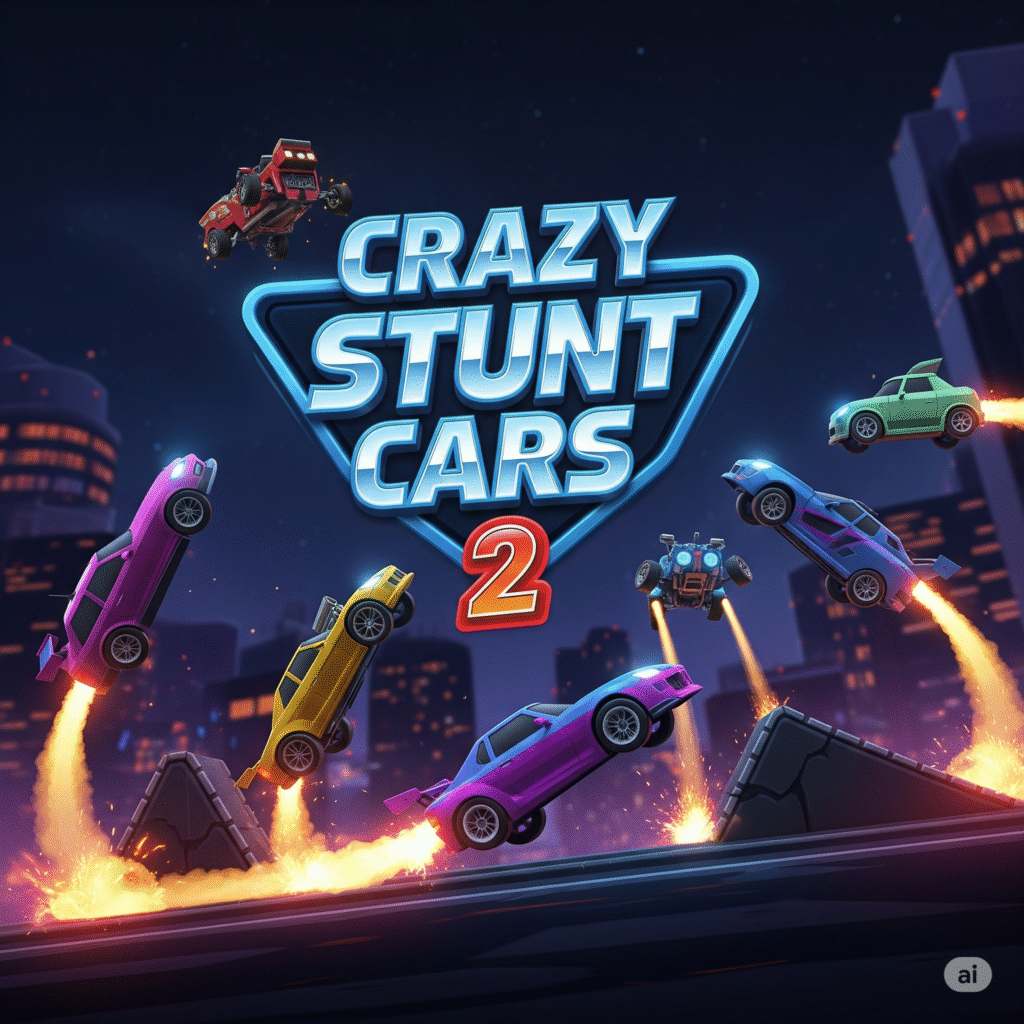Crazy Stunt Cars 2
Crazy Stunt Cars 2
How to Play California Speed: A Complete Guide to Mastering the Retro Arcade Racer
Rev up your engines and get ready to dominate the highways of the Golden State! In this guide, you’ll learn everything about how to play California Speed, the classic arcade driving game that brings high-octane thrills right to your keyboard. From establishing your racing strategy to understanding the precise key mappings, you’ll be set for victory. Whether you’re a seasoned gamer seeking nostalgia or a newcomer craving retro fun, this US-focused walkthrough will help you master every twist and turn.

Getting Started with Your Retro Racing Adventure
Before diving into engine roars and drifting corners, it’s essential to set up your game environment correctly. Follow these initial steps to ensure smooth gameplay:
- System Requirements
- Operating System: Windows 10 or newer
- Processor: Intel Core i3 or equivalent
- Memory: 4 GB RAM minimum
- Graphics: NVIDIA GeForce GTX 500-series or better
- Storage: 500 MB free space
- Downloading the Game
California Speed isn’t officially supported on modern consoles, so you’ll likely use an emulator such as MAME to run the arcade ROM. Ensure you legally own the original arcade board before downloading any ROM file—always respect intellectual property rights! - Configuring Your Emulator
- Open MAME and navigate to Options → Directories.
- Point the ROMs directory to your folder containing the calspd.zip file.
- In Input (this Machine), set up your preferred controls (we’ll cover the default hotkeys in the next section).
For more on emulator setup and arcade preservation, check out our Arcade Classics Overview.
California Speed Controls and Key Mappings
Understanding the controls is crucial to achieving top speeds and clean drifts. Below is the default keyboard mapping for the US PC port of the game:
| Action | Default Key | Alternative Key |
|---|---|---|
| Accelerate | ↑ Arrow | W |
| Brake/Reverse | ↓ Arrow | S |
| Steer Left | ← Arrow | A |
| Steer Right | → Arrow | D |
| Nitrous Boost | Space Bar | Enter |
| Gear Shift Up | E | Page Up |
| Gear Shift Down | Q | Page Down |
| Pause/Start | P | Esc |
Tip: Remap keys to match your ergonomic preferences in MAME’s Input settings. Many players find WASD for steering and Space for boosting more intuitive than the arrow keys.
Steering and Drifting Techniques for California Speed
Mastering the high-speed bends is what separates champions from back-of-the-pack racers:
- Early Steering
- Begin turning the moment you see the corner approaching. The sooner you initiate the drift, the smoother your exit speed.
- Feathering the Gas
- Lightly lift your accelerator just before a turn. This transfers weight to the front wheels for better grip.
- Nitrous-Assisted Cornering
- Use the nitrous boost right after you straighten the steering wheel post-drift to maximize acceleration on exit.
Optimizing Performance: Graphics and Frame Rate
A steady 60 FPS ensures fluid visuals and precise input response. Consider these tweaks:
- Resolution: Choose 800×600 or 1024×768 for a crisp yet retro feel.
- Frame Skipping: Disable any frame skip to avoid uneven motion.
- VSync: Turn off vertical sync if you experience input lag—instead, cap the framerate at 60 Hz in your graphics driver.
For advanced users, installing the dxvk wrapper can translate Direct3D calls to Vulkan, boosting performance on modern GPUs.

Race Modes and Track Selection Explained
California Speed offers several modes to keep gameplay fresh:
- Single Race: Pick any unlocked track and challenge the AI.
- Time Trial: Race against the clock to set personal bests.
- Tournament: Compete in a series of regional events culminating in the California Grand Prix.
- Multiplayer: Link up to four cabinets—or use split-screen emulation—to go head-to-head with friends.
Unlocked track list example (California Grand Prix):
- San Francisco Street Circuit
- Los Angeles Metropolis
- San Diego Coastal Run
- Yosemite Mountain Pass
For our full walkthrough of all Racing Game titles, head over to our Racing Games Hub.
Multiplayer Mayhem: Linking Cabinets and Emulation Tips
The thrill of wheel-to-wheel combat comes alive in multiplayer. Here’s how to set it up in MAME:
- Configure Multiple Instances
- Duplicate your mame.ini file into mame2.ini, mame3.ini, etc.
- In each config file, assign a unique machine name under ROMPaths.
- Network Settings
- Enable -server on the host instance and -client -ip 127.0.0.1 on others.
- Ensure your firewall allows UDP traffic on port 27015.
- Synchronized Game Speed
- Disable any frame skipping.
- Use Input → Poll Buttons to confirm identical polling intervals across instances.
Source for detailed networked MAME racing:
- Official MAME Networking Guide: Link
Advanced Tips and Tricks for Pro-Level Racing
Ready to leave your competition in the dust? Apply these expert strategies:
- Drafting Boost: Follow directly behind an AI car for at least two seconds, then use nitrous to slingshot past.
- Gear Mastery: Shift up before reaching redline to maintain optimal torque. Downshift mid-turn for engine braking.
- Pit Stop Strategy: In Tournament mode, plan pit stops to coincide with fuel depletion—saving time by avoiding unnecessary extra laps.
Troubleshooting Common California Speed Issues
Even the smoothest racer can hit a speed bump:
| Problem | Solution |
|---|---|
| Input Lag | Disable VSync; cap FPS to 60 Hz |
| Crashing on Startup | Verify ROM integrity; update MAME to the latest stable release |
| Audio Stuttering | Increase audio buffer size in MAME’s Sound Options |
| Network Desync in Multiplayer | Ensure identical game versions; disable antivirus/NAT filtering |
For more troubleshooting on classic titles, visit our Help Center.
Why California Speed Remains a US Gaming Icon
Since its 1998 arcade debut, this retro driving blockbuster has captivated American audiences with its neon-lit tracks and throbbing engine soundscape. Its depiction of California’s iconic landmarks—from the Golden Gate Bridge to Highway 1—cements its place in US gaming culture. Enthusiasts still hold annual high-score competitions in arcades across California, celebrating the game’s enduring legacy.
Outgoing Resources for Further Exploration
- Official Rareware Archive: Dive into the developer’s history at Retro Rareware.
- Arcade Museum Database: Track down original cabinet schematics on KLOV.
- Speedrun Strategies: Watch world-record runs on Speedrun.com – CA Speed.

Conclusion and Next Steps
By now, you’ve learned how to play California Speed with precision key mappings, optimized settings, and pro-level tactics. Whether you’re tackling solo Time Trials or linking up for multiplayer showdowns, these strategies will help you conquer every mile of asphalt. Remember, practice makes perfect—so fire up MAME, configure your controls, and hit the accelerator!
For more on classic arcade gems, explore our Arcade Classics Collection and join fellow retro racers in our Community Forum.



















